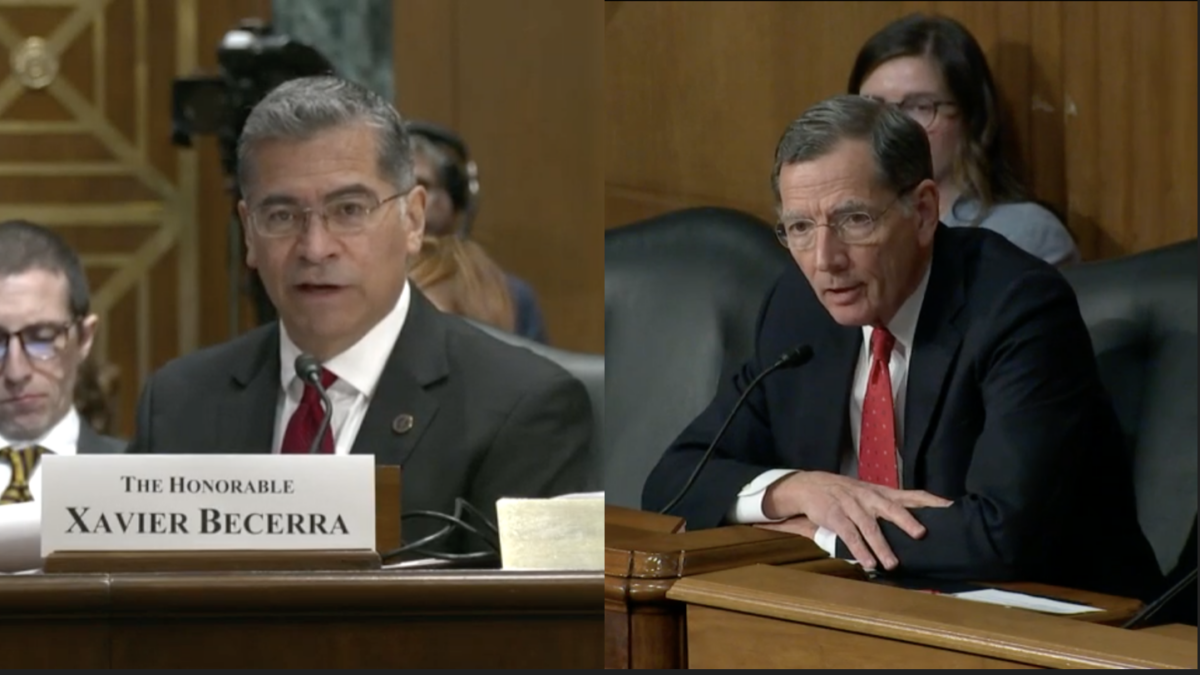
President Trump announced an immigration overhaul proposal on Thursday. He wants to maintain the current number of legal immigrants we admit annually at about 1.1 million, but he proposes to change our immigration system from emphasizing family re-unification to emphasizing skill-based immigrants. This is truly the best way forward to fix our broken immigration system.
For decades, our immigration laws have given overwhelming preference to applicants with family already residing in the United States. More than 60 percent of annual immigration visas are allocated for family reunification, while less than 20 percent of the annual visa quota is allocated for skill-based immigrants.
This approach doesn’t serve our nation’s needs because (a) the quota for family reunion is not based on labor-market demand; and (b) the visa preference hierarchy favors the old (parents of U.S. citizens and permanent residents) and the young (children younger than 21 years of age) but discriminates against the most likely productive potential citizens, people who may not have family connections, but do have knowledge, skills, and experiences that can contribute to our country.
In addition, supporters of such a system ignore a sad irony that our immigration system, although ostensibly keyed to family reunification, causes a great deal of pain for many families due to its long delays and huge backlogs. All you have to do is take a look at the latest visa bulletin board, published by the U.S. State Department, to see the problem.
The visa bulletin shows what priority dates are current for different visa applicants. As of May, 2019, siblings of U.S. citizens who were born in Mexico can expect to wait 21 years before immigrating to America (22 years if from the Philippines). Married adult children from Mexico and Philippines can anticipate waiting 23 years.
In the meantime, we are in the tightest job market the United States has ever seen. Current demand for skilled laborers far exceeds the annual visa quotas of 140,000, which causes a backlog of five or more years of waiting time for green cards (permanent residence) in the Skilled Workers and Professionals category. Analysis of future demand and pending backlogs indicates the problem is likely to grow worse unless Congress changes the numerical limits on employment-based immigrant visas.
It’s time to acknowledge that the current family reunion system is broken. So a good question for Democrats is: Why would they reject changes to this system?
A majority of our immigrants should come through the skilled-worker channel. Canada and Australia are shining examples of how such merit-based immigration systems create a win-win for both the immigrants and their new home countries.
Canada and Australia use web-based point systems that let a potential immigrant do an online self-assessment to find out if he or she is eligible to immigrate to their countries. The point system works like a scorecard, and it usually takes about 15 to 20 minutes to complete. It evaluates an applicant’s language ability, work experiences, education, and the like.
Only applicants who pass the minimum score can move forward with their immigration application. This kind of process is transparent and efficient. Neither country has the kind of case backlog the United States has. More importantly, the data points in the scorecards aren’t randomly selected. They are all factors that have been proven to be strong predictors of economic success among immigrants.
Both countries also have Skilled Occupation Lists (SOLs), which are updated frequently to reflect what skills in what industries their economies need most. A skill-based immigrant must identify if his or her experience, education, and skills are on the SOL before he or she can apply for immigration. Such an approach not only serves national economic interests, but also ensures skilled immigrants can be economically successful because their skills are in demand.
The emphasis on skills-based immigration has brought impressive results for Canada and Australia. In Canada, more than 60 percent of immigrants are skilled- or employment-based. Canadian government data shows that the labor participation rate for immigrants through the federal skilled worker program was 89 percent, and the average salary was $40,000 in year one and $47,000 in year two.
For Australia, 68 percent of immigrants to Australia are skill-based, while 31 percent are family-based. The labor force participation rate of independent skilled immigrants is 96 percent, much higher than the 67 percent among native-born Australians. Eighty-five percent of these immigrants are working full-time with a median earning of AUD79,000. Canada and Australia’s experiences show us that a country can reap great cultural, social, and economic benefits from the right immigration policy.
It’s time the United States adopts a similar approach. I am glad to hear President Trump propose to increase employment-based visas from 140,000 to 600,000. He also calls to establish three skills-based visa categories under the “Build America Visa” umbrella: workers with extraordinary talent, workers in sought-after specialized vocations, and exceptional students.
Such a boost in skilled workers is not only good for our economy and legal immigrants, but also is an important first step, along with a robust non-immigrant work visa program, that will reduce incentives for illegal immigration, since most illegal immigrants are economic migrants who seek employment opportunities in the United States.
Congress can and should debate how to build upon the immigration reform plan President Trump proposed. It should not ignore his framework and fall back to the same tired and ineffective approaches that have been tried and failed many times before.
Unfortunately, that’s exactly what Democrats are doing. They say they are standing up for the rights of immigrants, yet the only policy idea they have is to oppose anything President Trump proposes, no matter how much sense his ideas make.
It’s very telling how little governance Democrats have been doing since they won the House in the 2018 election. So far, other than a silly Green New Deal and an impractical “Medicare for All” proposal, they haven’t made any common-sense policy suggestions on any real issue the American people care about.
It seems a third of Democrats focus on running for president, a third of them focus on perpetuating the debunked Russia collusion theory, and a third of them focus on becoming social media stars. What none of them focus on is doing the kind of work the American people sent them to Congress to do.
The American people are tied of our broken immigration system, and we demand a common-sense reform. If the Democrats refuse to work with the president on this massive national need, voters know what to do in 2020.









